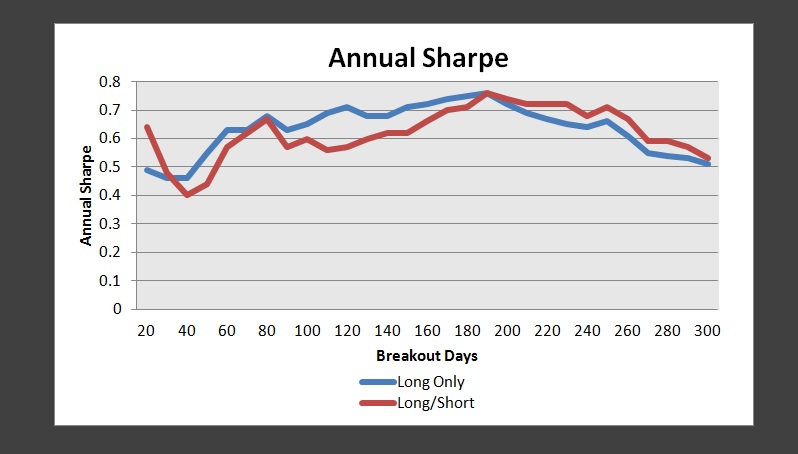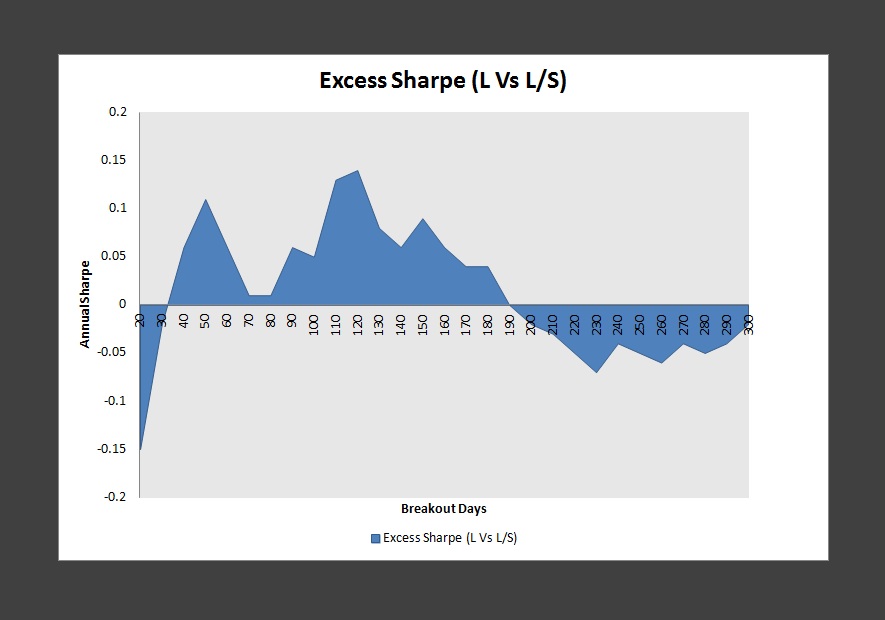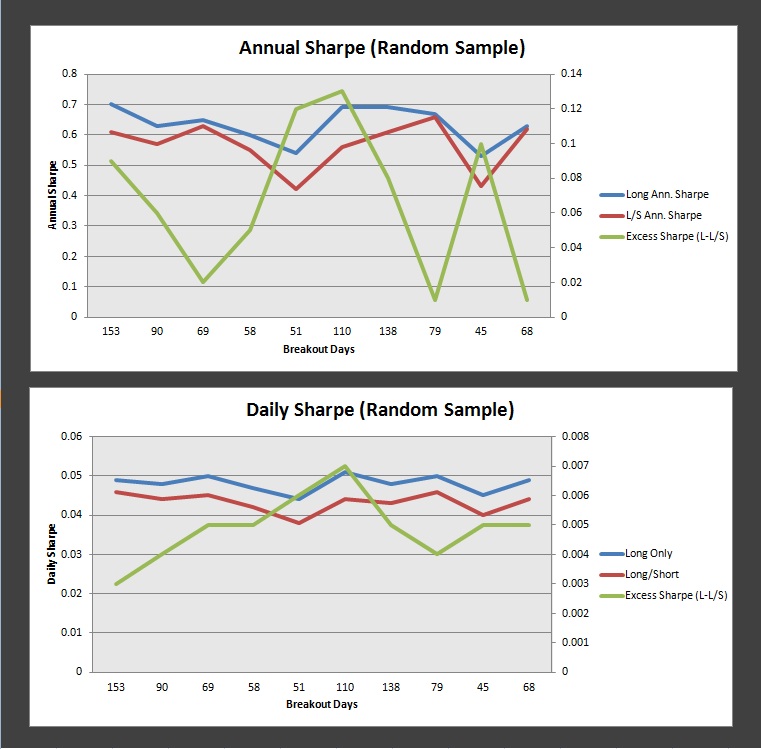For a given interval of time and with the right environmental variables, we usually don’t see panic buying. On the other hand, all else equal, there are myriads of examples where panic selling occurs. One such example of the modern creation is the flash crash of May 9th 2010. This is true for the equities market.
Can we extend our rationale to futures? How has a long only strategy performed compared to long short? Does this apply to a variety of trend following systems? In this little study I set upon with an hypothesis that shorting brings forth volatility to a trading strategy due to the fundamental idea in buying and selling. I will be coming from a trend following perspective with 3 sample systems and compare their performance across parameters and time to ensure validity of my findings.
For the entire set of simulation I will be using ratio adjusted futures contracts. Test range will be from first trading day of 1980 to 5 months in to 2011. 56 markets will cover all sectors to ensure diversification and robustness of results. No commission is used.
For the first system I will be testing a Donchian N-Day breakout. It will take on one parameter, the breakout day. The exit day will be the same as entry. Sizing is Fixed fractional 1%.

In the above chart, I’ve parameter stepped the system from 20 days to 300 days in increments of 10. This is to ensure that conclusions can be drawn for breakout systems in general rather than just 1 parameter. I’ve recorded the annual Sharpe ratio of both the Long only strategy and Long/Short version of it. As you can see form the results, short to intermediate term breakout days show (40 to 180) consistently higher Sharpe.

Here is another view, showing the excess Sharpe generated for Long only compared to Long/Short. Does this simple test show that long only breakout strategy of intermediate term is better and less volatile compared to Long/Short? If so how come?
To ensure that the period between 40-180 is no fluke, I used a random number generator (numbers generated from atmospheric noises) and picked 10 integers between 40-180 and tested it Long vs Long/Short. The results..

In this, I also incorporated the daily Sharpe ratio (second graph) to show if its consistent with my earlier findings in a different time frame. The excess Sharpe for both graphs were all above zero.
In this simple test, evidence suggest breakout strategies do seem to consistently performance better when they are traded long only rather then long short. I’ve also tested the breakout strategy trading the short side, the results show that it had higher volatility, DD, and lower return.
I thought i'd post this on the forum to get peoples take on it. (my methods of analysis, conclusions, etc) Post was inspired by a short discussion here..
viewtopic.php?t=9284

